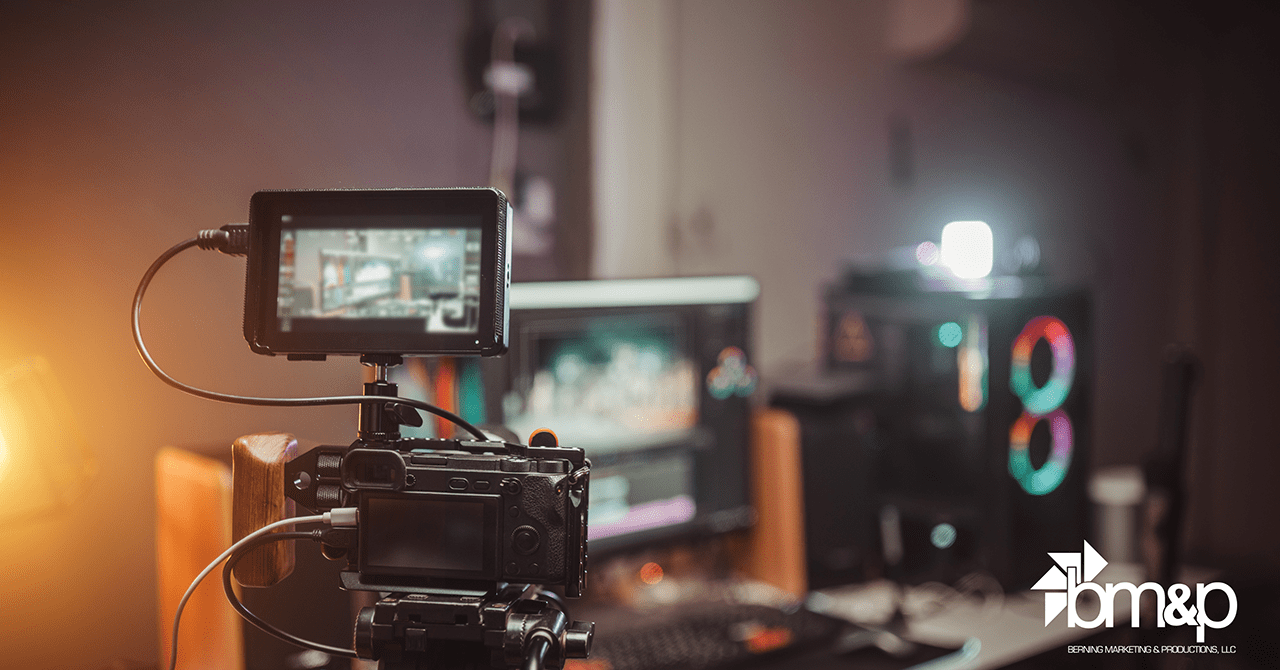
13 Oct How AI is Revolutionizing Post-Production
In the ever-evolving world of film and video production, Artificial Intelligence (AI) is reshaping the way creative teams approach post-production. What once took days or even weeks of painstaking manual editing can now be streamlined with intelligent tools that enhance efficiency, precision, and creative freedom. At Berning Marketing & Productions (BM&P), we’re always looking for ways to stay ahead, and AI is one of the most powerful advancements transforming our workflow today.
Smarter Editing, Faster Turnarounds
AI-powered editing tools can automatically sort through hours of footage, detect scene boundaries, and assemble rough cuts based on metadata, transcripts, or story outlines. This means editors can focus more on storytelling and creative polish rather than repetitive tasks. Leading editing software like Adobe Premiere Pro, DaVinci Resolve, and Final Cut Pro have already integrated AI features to assist with such workflows.
Adobe’s experimental “Project Blink” is also aimed at letting editors work by content rather than frame-by-frame, making it quicker to find the “story” in raw footage.
Enhanced Audio and Visual Quality
From noise reduction to color correction, AI enhances post-production quality in remarkable ways. Tools can automatically balance tonal consistency across shots, detect flicker, or match skin tones across different lighting.
On the audio side, AI systems can isolate dialogue from ambient noise, clean up hums, and refine ADR or Foley tracks. Some are even used for smart lip-sync or localization.
Streamlined Visual Effects (VFX)
AI plays a significant role in VFX workflows. Rotoscoping, previously a slow frame-by-frame task, can now be sped up with AI-based masking and matting tools.
AI can also help generate backgrounds, fill missing frames, or propose visual enhancements like reflections or texture synthesis, pushing the envelope of creativity.
The Importance of Understanding AI (And Why We Do)
Using AI blindly is risky. It can introduce artifacts, bias, or creative dissonance if not guided by human judgment. Knowing how AI functions and when to intervene is essential.
At BM&P, we don’t just adopt AI tools; we master them. Our team invests in training and R&D so that we can:
- Recognize where AI suggestions help vs. hinder
- Maintain creative control even as AI accelerates tasks
- Ensure quality, consistency, and artistic integrity
- Keep our processes adaptive, knowing which tool to use when
Because ultimately, it’s not about what the tool can do, it’s about what you make it do.
Improved Collaboration and Workflow
Post-production is rarely a solo act. AI tools can help with tagging, transcription, metadata generation, and file organization, making collaboration across editors, sound designers, colorists, and producers smoother.
This means fewer bottlenecks, better version tracking, and more time for creative decision-making.
Creativity Amplified
There’s a misconception that AI will replace human creativity. In truth, if used wisely, it can free creators from tedious tasks so they can spend more time on what matters most: story, emotion, pacing, and visual style.
At BM&P, AI is an ally in our creative toolkit, not a replacement. It accelerates iteration, helps us try more ideas, and gives us confidence to push boundaries.
Real-World Momentum
New AI tools are already making waves in filmmaking:
- Veo3 / Flow (Google) has been used to generate scenes and ambient elements in recent short film experiments.
- Sora 2 is OpenAI’s answer to video generation, which is generating a lot of buzz about its capabilities.
- AI adoption in post-production is helping smaller creators close the gap with studios by automating routine tasks.
- Academic research on interactive neural video editing (e.g. INVE) shows that future workflows may let users edit one frame and propagate changes intelligently across the video.
Challenges & Ethical Considerations
- Creative control: AI can overstep or suggest choices that clash with the intended mood or message.
- Over-reliance: Leaning too heavily on AI may dull human intuition over time.
- Intellectual property & credit: As AI contributes more, attribution and licensing become murky territory.
- Quality & artifacts: AI suggestions sometimes come with visual glitches or audio inconsistency; human review is non-negotiable.
Research into AI in film stresses these trade-offs, urging creators to maintain a balance between automation and artistry.
The Future Is Here
The post-production landscape is changing fast. AI is no longer speculative; it’s operational. The studios and creators who win will be those who master both the tool and the craft.
At BM&P, we commit to staying at that intersection where technology meets storytelling. Because in the end, the best tool in the room is the one you know how to use.



Sorry, the comment form is closed at this time.